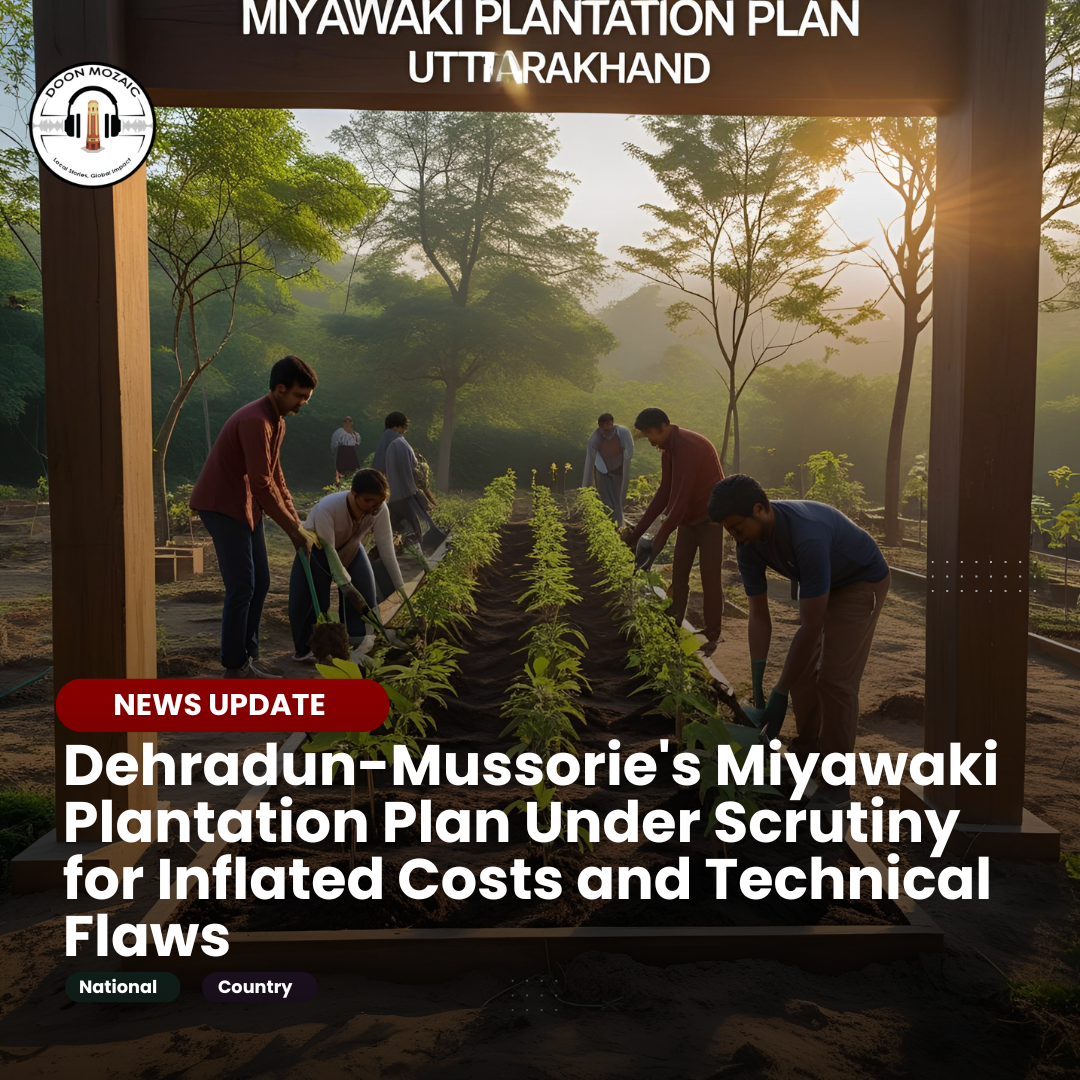A plantation initiative using Japan’s Miyawaki technique in Dehradun and Mussoorie forest divisions is now under the scanner for cost irregularities and technical inconsistencies, raising questions about possible misappropriation of public funds and flawed project planning.
The Controversy: 10x Cost Overrun
The Dehradun Forest Division submitted a proposal to plant 18,333 saplings at ₹100 each, totaling ₹18.33 lakh for just one hectare. This is ten times the standard cost, as plants prepared in forest nurseries typically cost ₹10 per sapling, according to norms laid out by forest research units.
Chief Conservator of Forests (CCF) for Planning and Research, Sanjeev Chaturvedi, flagged the issue, calling it “perhaps the world’s most expensive plantation proposal.” In a letter to the Principal Chief Conservator of Forests (PCCF) Dr. Dhananjay Mohan, he strongly recommended an investigation, which has since been initiated.
What is the Miyawaki Technique?
The Miyawaki technique, developed in Japan, focuses on planting a dense mix of native trees in small areas to restore green cover quickly. The method encourages planting small saplings close together to foster competition and fast growth, creating dense urban forests in just a few years.
But the Dehradun and Mussoorie proposals violate core principles of the technique.
Misapplication of Technique in Mussoorie Plan
In the Mussoorie Forest Division, officials proposed planting saplings 7–8 feet tall at a cost of ₹100 to ₹400 per plant. This is highly irregular, as Miyawaki plantations use small, young saplings, which then grow rapidly due to close spacing.
The CCF called this “laughable” and questioned whether there was any technical review or understanding of the method before proposing such inflated rates and unsuitable plant sizes.
The Mussoorie proposal, spread across six ranges, had an overall estimated cost of ₹4.25 crore, raising additional red flags about budgeting and procurement practices.
Fencing Costs Also Questioned
In both divisions, the cost of fencing was found to be significantly above standard rates. For example, ₹1.57 lakh per hectare was proposed for plains fencing, but higher figures appeared in the Dehradun plan without justification.
Previous Successful Examples Exist at Lower Cost
Chaturvedi also cited a one-hectare Miyawaki forest in Kalsi (Dehradun) where the total five-year expenditure was only ₹14.8 lakh — far below the current proposals. This raises a critical question: why are new projects demanding up to three times more for similar work?
He urged the Forest Department to stick to the cost standards set by the Forest Research Circle and avoid unnecessary external procurement when government nurseries are equipped to provide saplings at a fraction of the cost.
What Do the Officials Say?
- DFO Dehradun, Neeraj Sharma, claimed the proposal was prepared according to standard norms.
- DFO Mussoorie, Amit Kanwar, acknowledged the CCF’s concerns and said a revised plan is being prepared to fix the discrepancies.
- PCCF Dr. Dhananjay Mohan confirmed that an official investigation has been initiated and necessary action will follow based on findings.
Conclusion: A Case of Oversight or Overspending?
The revelations around the Dehradun-Mussoorie Miyawaki plantation plans suggest either a serious oversight in technical planning or a deliberate attempt to inflate costs — both of which call for greater transparency and accountability. At a time when ecological restoration is critical, any misuse of funds or deviation from best practices could set dangerous precedents.
The forest department now faces the task of restoring credibility — not just by revising budgets, but by ensuring the true spirit of Miyawaki afforestation is upheld, without letting greenwashing become a cover for poor governance.
Discover more from The Doon Mozaic
Subscribe to get the latest posts sent to your email.



